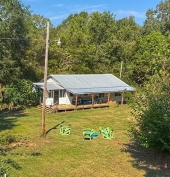posted 12 years ago
Thanks for the Resources Eric,
I agree with your approach of crafting one's own business plan. I have done a little work in this area and am currently working on a couple of business plans for permaculture based businesses.
Here's some feedback for you Ben,
Applying Permaculture Design to a business plan, I like the Zone model using
Zone 1: Short term product yields to provide cash flow and operating costs: these have rapid turnover time and easy market access: production example sprouts, seeds, annual veggies, poultry; service example 1 day workshop in your expertise, consulting, landscape maintenanceZone 2: Medium Term product yields developed with cash flow: these require some time to develop infrastructure or life cycle development to establish production: product example fruits, jams, nuts, nut butter, nursery plants: service example Design-Build firm,Zone 3: Long term product yields that leave a legacy and provide retirement and operating costs for the next generation: these are the resilient, regenerative systems outcomes that we strive for: product example black walnut lumber, oak mast and lumber forest, sugarbush for maple sugar, high quality pasture providing seed, honey, herbs, and livestock, lumber systems for veneer, etc. service example: policy group guiding local and regional legal and cultural systems towards regenerative systems development and management
you could then apply sector model thinking to assess flows of materials and of market access. This could be done both spatially and temporally (i.e. put the calendar on a 12 digit polar clock coordinate system and map times of production, market access, peaks and lulls in value of products, etc.)
Within this model, we can focus most of our energy at the beginning on developing zone 1 systems to make sure we can stay in business while implementing the zone 2 and 3 systems that feedback to improve zone 1 production as well as produce products themselves.
I'm sure there are many more rapid return high yield and high value crops and products that I have not listed.
One reason why it is important for you to craft an individual plan is that you can assess your specific market and production context. If you already have a working farm, then the next best use might be to develop a system of drying produce and herbs to extend your market access time and to add value to products, another might be a commercial kitchen, another might be a system of eliot coleman style tunnel houses. without the context it is hard to say what will give you the quickest and most long lasting return on investment.
I would start by assessing my current resource base and finding ways to increase revenue from that base or decrease expenses by improving infrastructure, systems, or management.
Regarding an Industrial park, this sounds like a large scale project with many partners, so a more complete systems analysis would be important. I would first look at any industrial park business plan templates and then assess them using a permaculture design approach, perhaps also using industrial ecology literature, and other 'mainstream'/scholarly references as well to provide case studies and credibility to your claims.
I'm new to the business approach so I always appreciate feedback and discussion to improve all of our ventures in regenerative enterprise.
Sounds like an amazing opportunity.
Neil





 2
2
















 2
2

















 1
1




 1
1










